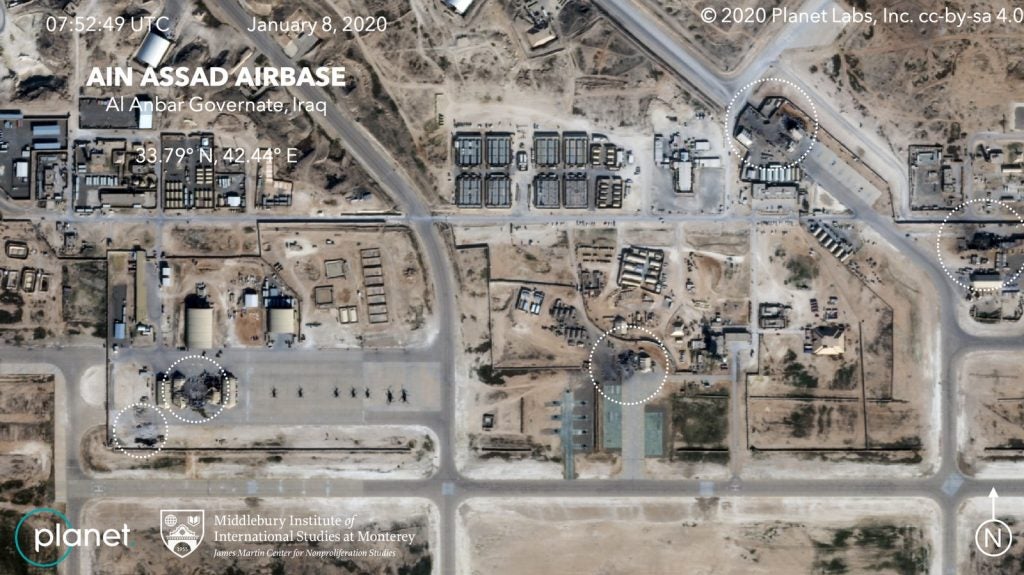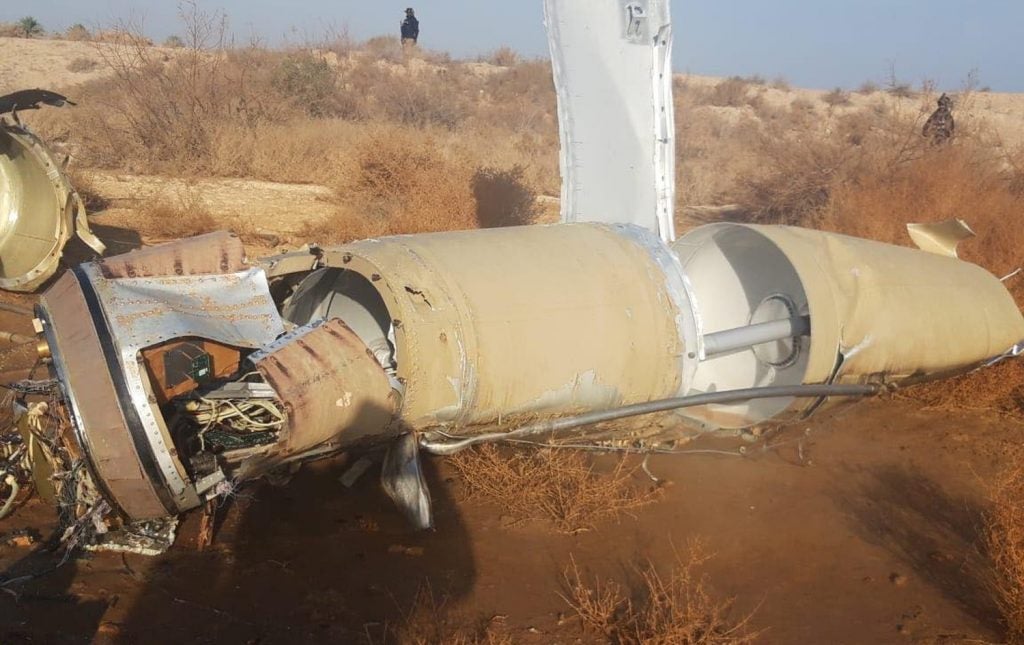Iran Launches Ballistic Missiles at Iraqi Bases
In the early hours of 8 January, Iranian forces launched ballistic missiles against Iraqi military bases hosting US and coalition military personnel. The launches came shortly after the burial of former Quds Force leader Qasem Soleimani, who was killed on 2 January in Baghdad by a US airstrike. The Iranian government had vowed retaliation against the US following the airstrike.
The facilities targeted were al-Asad Air Base, in Anbar province, and Erbil Air Base in Iraqi Kurdistan. The Pentagon has stated that over a dozen ballistic missiles were launched. The Iraqi Security Media Cell reports 22 missile impacts in Iraq, with 17 of them targeting al-Asad Air Base.
The US, Iraqi and coalition militaries have all stated that there were no casualties from the ballistic missile strikes. However, damage assessments at both bases have yet to be released. Planet Labs, a satellite imaging company, has released satellite images of the apparent damage at al-Asad Air Base.

The ballistic missiles used in the attacks appear to be Qiam-series and Fateh-series short-range ballistic missiles. The Qiam-series has seen use prior to this attack, being used by Iran against ISIS targets in Deir-ez-Zor in Syria following an ISIS attack in Tehran in 2017. Qiam-series ballistic missiles have also been seen in service with Houthi militias in Yemen, being referred as Borgan-H2s and Borgan-3s.
The Prime Minister of Iraq, Adel Abdul-Mahdi, has stated that the Iraqi government was notified by the Iranian government of the imminent missile attack, with the Iranian government claiming that the missiles would only target facilities with US military presence. The President of Iraq and the Speaker of the Parliament have both condemned the ballistic missile attacks as violations of Iraq’s sovereignty, while the Prime Minister has yet to issue any comments on the attacks.
In a speech after the attacks, US President Donald Trump credited precautions, dispersal and early warning for the lack of casualties. He claimed that “Iran appeared to be standing down”, before announcing the imposition of additional sanctions on the Iranian government in the coming days. He additionally urged a greater NATO involvement in the Middle East.
Iranian state media reported that 80 “American terrorists” were killed, and the Supreme Leader of Iran, Ayatollah Ali Khamenei, made a televised speech describing the strike as the beginning of a larger effort to push the US out of the Middle East. However, Iranwire quotes an anonymous Iranian diplomat noting that the strike was designed to avoid American personnel.
The attack on the bases could provide a means of deescalation for both the US and Iran. The Iranian regime can ill afford a major conflict with the US, but the ballistic missile attack allows it to claim to domestic audiences that it has already struck back without risking a major response from the US. Iran had conducted a similar rocket attack on Israeli border outposts in the Golan Heights in May 2018, after vowing vengeance for the death of IRGC personnel in an Israeli airstrike on the T4 airbase in Homs. Nearly all rockets in that attack were intercepted by Iron Dome, or fell short in the Syrian side of the Golan Heights, resulting in no casualties and minimal material damage to the IDF. The apparent failure of the attack, however, failed to dissuade Israel from conducting extensive airstrikes against Iranian assets in Syria, an outcome the Iranian regime would probably like to avoid repeating.

